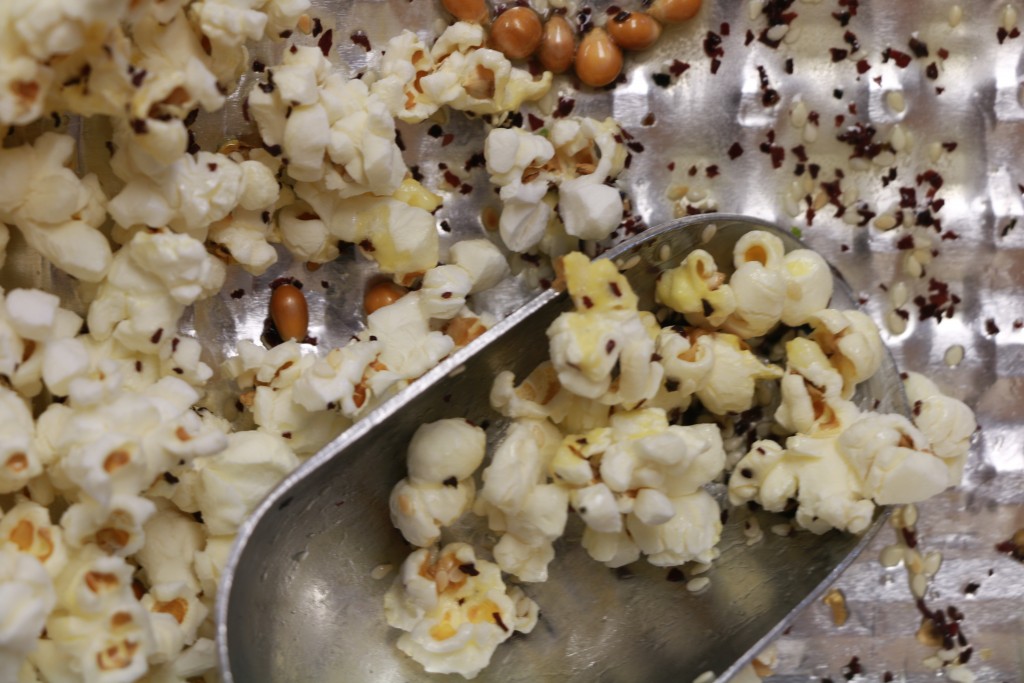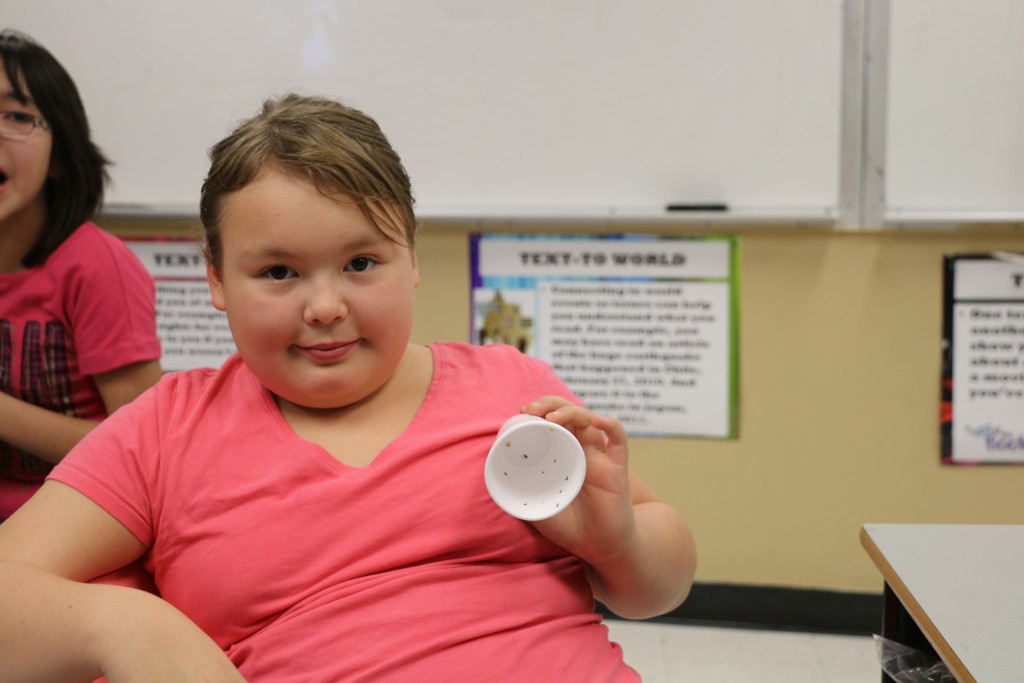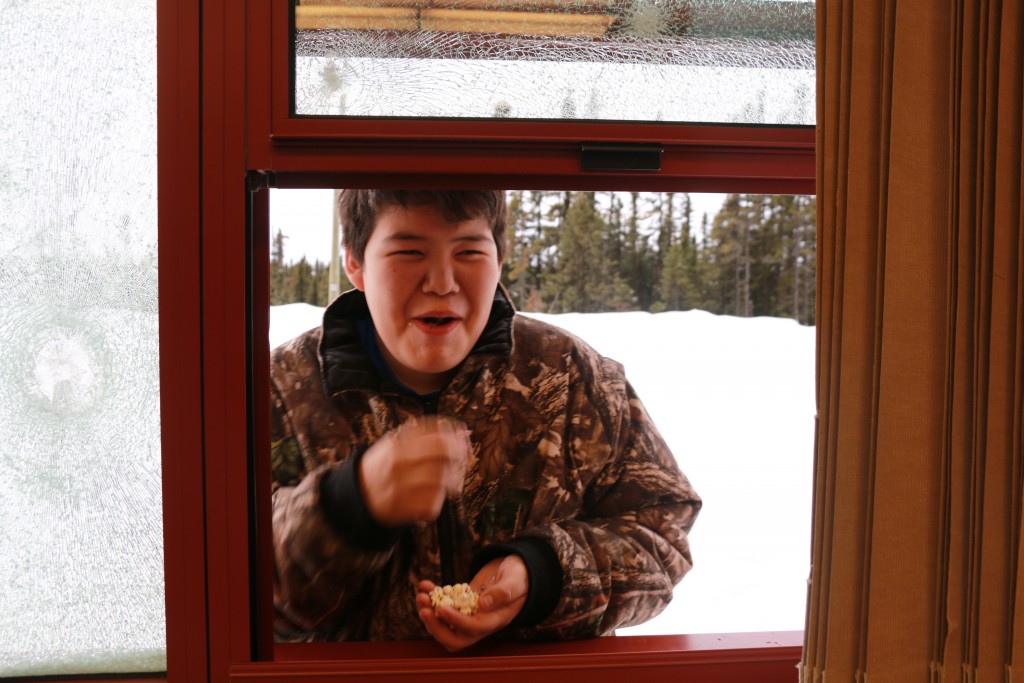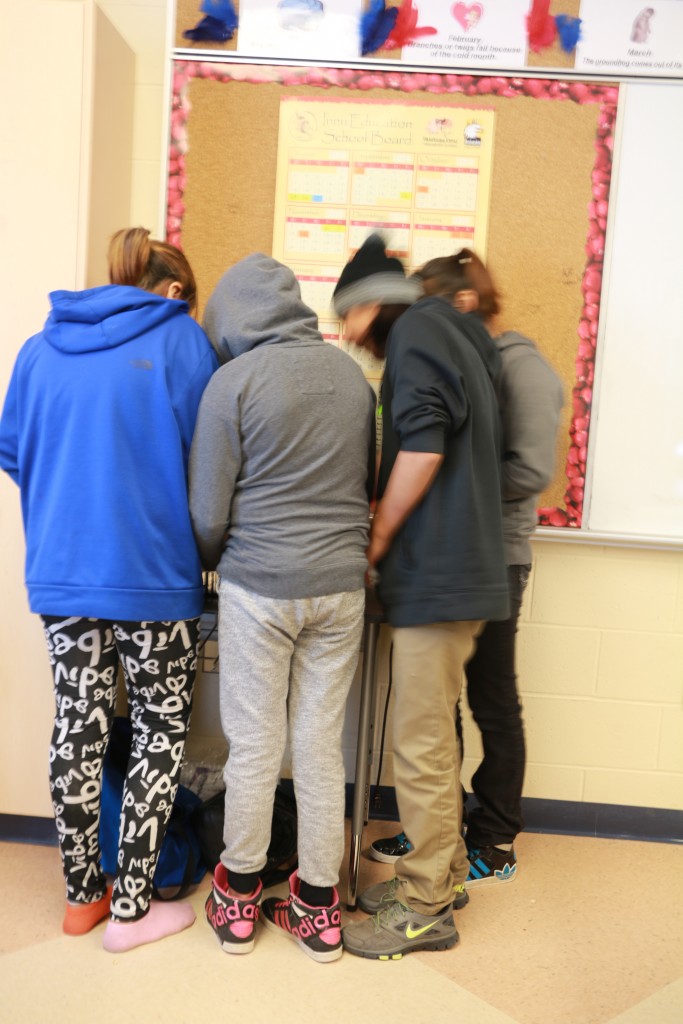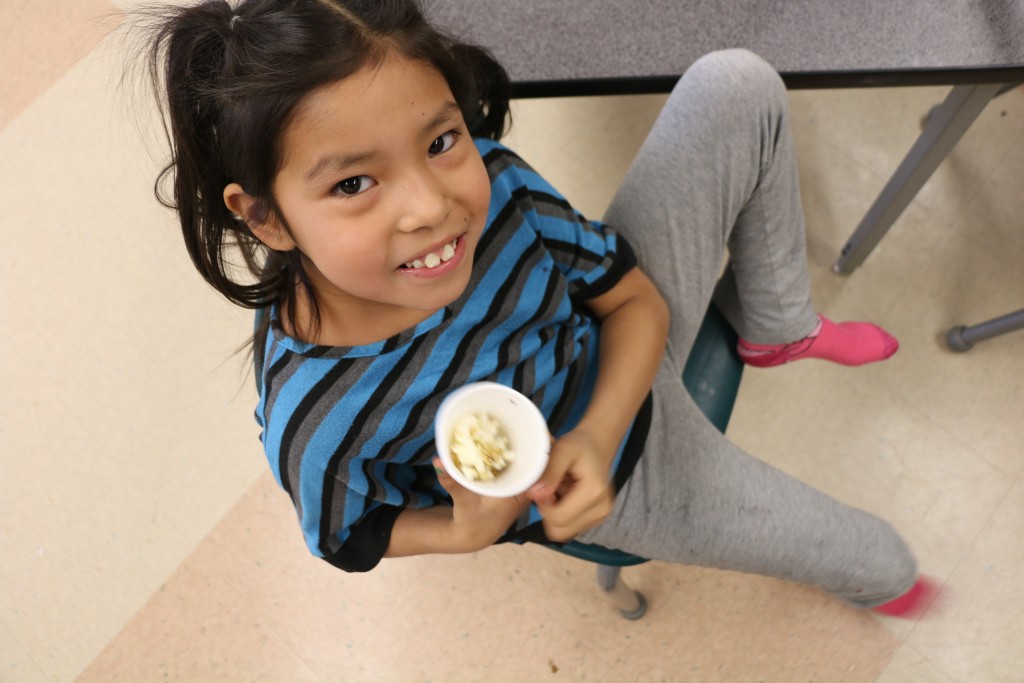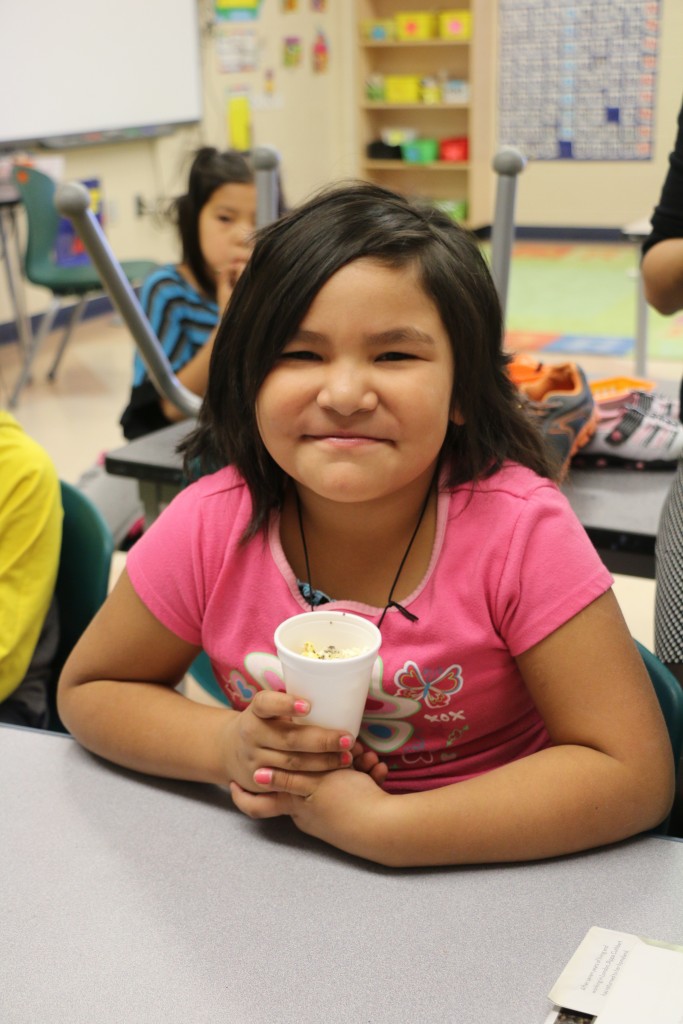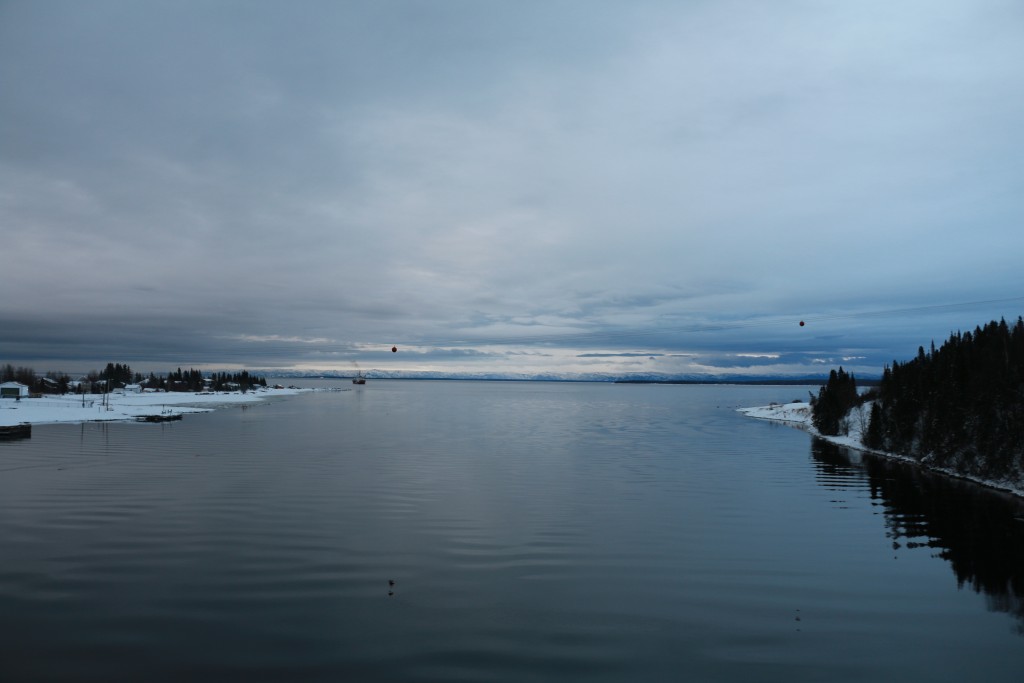Every November, for the past 39 years, a crop of writers, musicians, artists and performers arrive in Happy Valley-Goose Bay for the Labrador Creative Arts Festival.
The Festival works like this: During the day the visiting artists conduct workshops in the elementary, junior, high schools and community centres in Happy Vally-Goose Bay. If weather permits, artists travel, in a Twin Otter, to take their workshops to coastal community schools. A team of festival volunteers drive them anywhere they need to go, volunteers billet and feed them, and someone makes lunches that magically appear in the fridges of teacher staff rooms. Students from all over Labrador (and this year a group from Newfoundland) write and preform nightly plays for the community at the Happy Valley-Goose Bay Lawrence O’Brien Arts Centre.
Every year the theme of the festival is different; the 2014 theme was COMMUNICATION. I was invited to come as the ‘food person’ – somewhere between artist and writer, shall we say.
I was thrilled. Discussing food, I’ve always believed, is the best way to connect and communicate with each other. The other artists explored communication through dance, painting, music, writing and storytelling. But food… everyone eats, and everyone has a story about what they eat and why they eat it. The challenge is getting students under the age of eighteen to be comfortable enough to talk.
So how do you get students to talk? Gross them out.
Seaweed is so underrated. It’s been on my mind ever since my co-author, Pippa Cuthbert, included a recipe for a miso-inspired sea vegetable soup in our book, Vegetarian. Pippa is from New Zealand, where they celebrate fruits and vegetables from the sea. I’m from Nova Scotia where we celebrate often, but seaweed isn’t high on the list. We harvest seaweed, but rarely do we eat it; the word weed says it all. Dulse is the exception. My parents have been eating the mineral and protein rich sun dried alga from the depths of Grand Manan for years. Most people under the age of 65 think it smells like rotten beach.
However, last spring while in London I ate smoked Scottish dulse sprinkled over langoustine with shiitake and white asparagus at The Ledbury. Chef Skye Gyngell is serving seaweed butter with grilled langoustines at her new London restaurant, Spring. Here in Halifax Bar Stillwell served dulse topped popcorn. My kids are choosing Japanese dried seaweed packs over ring pops at our corner store.
Admittedly, Japanese seaweed aside, I used to fall into the ‘dulse smells like rotten beach’ category. But as a proud Maritimer, I don’t want to be there. Like Pippa, I want to embrace what surrounds us even it means twisting ingredients and incorporating foreign flavours in order to suit palettes. So I came up with a Maritime dulse version of furikake, a Japanese seasoning made from toasted nori, sesame, sea salt and sugar. It’s great on rice, fish, and like Bar Stillwell taught me, popcorn.
Furikake would be my connector in Labrador. I’d share the fruits of our ocean in a new, weird way. My brother-in-law’s air-pop popcorn maker fit perfectly in my suitcase. We’d make popcorn in class, toss it in melted butter and a sprinkle of furikake. In return I hoped the students would share their food stories with me. They’d smell the furikake and tell me if it smelled good or like rotten beach. Maybe they’d tell me something gross about their food culture.
It worked.
This lovely lady from North West River was skeptical. She smelled her cup of furikake popcorn, started slowly, then polished it off. Then she told me how to hunt seal. “Wear sunglasses cause it’s very sunny on the frozen ice. But you get a funny racoon tan. Spear the seal – you can or your Dad – with a zig-zaggy thing. It’s shaped liked that so the seal won’t fall off. Then tie the seal to the back of the ski-doo. Your dad will skin it and stuff, then you give it to your granny. She’ll fry it up or put it in a jar.”
Uapush Ashini from Sheshatshiu ate his furikake drive-through style.
His classmates were fascinated by my ancient popcorn maker.
I brought my polaroid camera along. The students posed, they styled popcorn, they took photos of their photos.
I learned about trapping. I learned that you eat what you catch. Squirrel isn’t so bad. Porcupine quills come off when your roast the porcupine over the fire. The quills melt and smell a bit like plastic. The Innu kids don’t eat much seal; the Inuit do. Buckets of foraged bake apples are worth lots of money. If you make popcorn, students will smile.
The students from Black Tickle on the West Coast of Labrador thought we should re-name the furikake – it had to be something mysterious, something magical, something ocean-inspired. Why not Sea Sprinkle? Listen here for the conversation.

